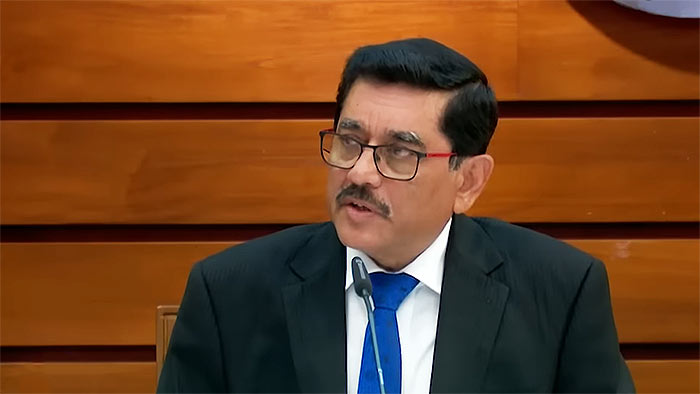With IMF bailout, Sri Lanka will have healthy dollar reserves in 4 years – Central Bank Governor

Dr. Nandalal Weerasinghe. (Photo: CBSL)
The International Monetary Fund (IMF) bailout will help bring Sri Lanka’s depleted foreign exchange reserve to pre-crisis levels in four years, said the country’s central bank governor.
On Tuesday, the IMF extended a long-awaited US$ 3 billion (S$ 4 billion) loan to the island nation, which has been reeling since 2021 from its worst economic crisis since independence.
The bailout comes with a structured four-year programme that requires Sri Lanka to achieve debt sustainability, shore up more foreign exchange to create a healthy reserve, and improve state revenue by raising taxes and slashing utility subsidies.
Sri Lanka owes around US$ 51 billion to external lenders, the repayment of which was suspended when its government declared bankruptcy in July 2022.
“During the programme period of four years, we are committed to bringing foreign exchange reserves back to levels we had before the crisis, which is about US$ 8 billion to US$ 9 billion – this is not comfortable, but it will be sufficient,” Central Bank of Sri Lanka governor Nandalal Weerasinghe told The Straits Times on Thursday.
The most Sri Lanka has ever had in reserve is US$ 10 billion, he said.
Among the sources of US dollars will be concessional loans of up to US$ 7 billion from the Asian Development Bank, the World Bank and other financial institutions, private investments, and export earnings, the governor added.
“We will also engage in good faith with our foreign creditors through a debt-restructuring process to reduce our annual debt service payments, which is now a significant US$ 6 billion per year,” said Mr. Weerasinghe.
The import-dependent country’s reserves had dipped dangerously to US$ 500 million in 2021, but improved to US$ 2.2 billion in February 2023 after Sri Lanka stopped interest payouts and some countries such as India extended fuel on credit.
Blaming previous governments for borrowing excessively from the global markets at commercial interest rates to finance fiscal deficit, Mr. Weerasinghe said Sri Lanka would have access to borrow from the international market only after the four-year programme.
“I would advise the government that even if we have access to the commercial market, our borrowings will have to be much more carefully evaluated, and properly invested in areas that can generate enough foreign exchange to service the debt,” he added.
From 2010 to 2021, the share of such commercial borrowings – called sovereign bonds – in Sri Lanka’s external debt tripled, from 12 per cent to 36 per cent.
In 2021, they accounted for 70 per cent of the government’s annual interest payments.
Mr. Weerasinghe took over the central bank in April 2022 from his much-criticised predecessor, Mr. Ajith Nivard Cabraal.
Mr. Cabraal was known to be close to former president Mahinda Rajapaksa, and had served as his economic adviser when the latter was prime minister.
Mr. Cabraal had opposed an IMF bailout in favour of a domestic solution to the economic crisis.
But as dollar reserves dipped, the island could not afford to import food, medicine, fertiliser and fuel, triggering grave shortages.
Struggling Sri Lankans launched massive protests across the nation in April 2022, forcing then President Gotabaya Rajapaksa and his brother, Prime Minister Mahinda Rajapaksa, to resign.
The Parliament then appointed Mr. Ranil Wickremesinghe as president and he is now leading the economic recovery.
(Source: Strait Times)
Latest Headlines in Sri Lanka
- Sri Lanka to operate immigration department 24/7 to speed up passport issuance February 5, 2025
- Sri Lanka announces new paddy purchase prices from February 6, 2025 February 5, 2025
- Sri Lanka launches national survey on toque macaque February 5, 2025
- Sri Lankan MPs’ meal price jumps over four times from Rs. 450 to Rs. 2,000 February 5, 2025
- Sri Lanka to cut water tariffs by up to 30% February 5, 2025


